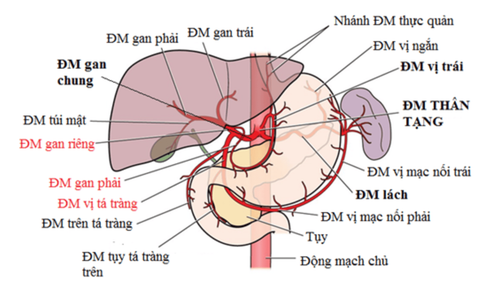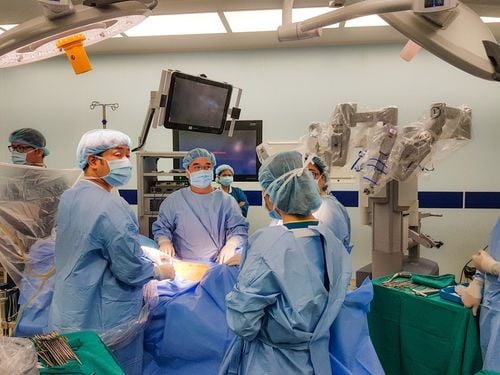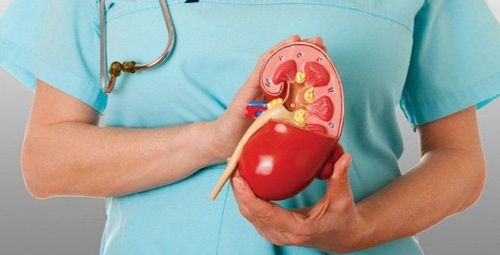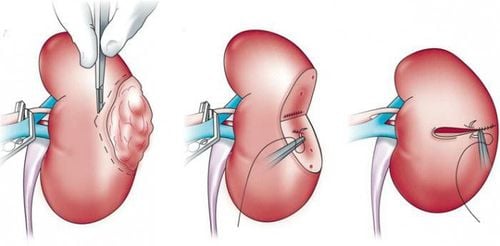This is an automatically translated article.
Auxiliary nephrectomy is the standard treatment for congenital double kidney disease of the urinary tract. The method of laparoscopic nephrectomy is used to treat patients with many advantages.1. Indications and contraindications for laparoscopic adnexal nephrectomy
The condition of the double kidney is not prominent until the patient has symptoms of hip pain, the upper kidney is infected with water. The patient is indicated to have an auxiliary nephrectomy when the ureter of the upper kidney is misplaced, the upper part of the kidney is hypoplastic, fluid, and functional.Similar to contraindications for other endoscopic surgeries such as inability to adapt to general anesthesia, severe inoperable cardiovascular disease, uncontrolled coagulopathy, and hypovolemic shock.

Bệnh nhân rối loạn đông máu chưa kiểm soát được chống chỉ định với phẫu thuật nội soi cắt thận phụ
2. Preparing for laparoscopic appendectomy
The patient is prepared with a health record, marking the surgical area before performing laparoscopic appendectomy. Specifically, the patient needs to do enough basic tests, evaluate the compensation of kidney function. It is imperative to perform ultrasound, intravenous urography, computed tomography, urinary magnetic resonance to determine the cause of the disease, evaluate kidney function on both sides. Patients who are weak and exhausted need to be improved before surgery.The patient is under endotracheal anesthesia, the urethral catheter is placed before surgery
3. Carrying out laparoscopic appendectomy
Peritoneal approach After urethral catheterization and nasogastric catheterization, the patient is placed in a supine or 30-45 degree position. The load-bearing points on the patient's body must be shielded so as not to injure the neuromuscular system.Trocar position: 1 trocar 12mm in the umbilicus, 1 trocar 12mm across the umbilicus outside the rectus muscle, and 1 trocar 5mm between the sternal tip and the navel.
Open the Toldt fascia to move the colon to the middle. Perform a Kocher maneuver to expose the duodenum and inferior vena cava (right nephrectomy). Renal peduncle dissection to find renal vein, renal artery. Find the ureter of the accessory kidney, dissect it up to the renal hilum. Ureterectomy of the accessory kidney across the lower pole of the kidney. Trace the ureter to find the arterial and venous branches that supply the accessory kidney. The accessory nephrectomy follows the borderline of hypoperfusion between the two kidneys. The specimen was removed through a small incision in the midline below the umbilicus or the Pfannenstiel line.
Pararenal drainage Retroperitoneal approach: The patient lies on his side in a position of 90 degrees opposite the lesion, with 3 trocar positions. Create retroperitoneal space: Use nelaton tube and gloved finger to polish; 700ml balloon pump to create retroperitoneal space. Open the Gerota fascia, dissect the renal peduncle, vein and renal artery. Find the ureter of the accessory kidney, dissect up to the renal hilum; ureterectomy of the accessory kidney across the lower pole; tracing the ureter to find the arterial and venous branches supplying the accessory kidney. The accessory nephrectomy follows the borderline of hypoperfusion between the two kidneys. The specimen was removed through the enlarged incision of the 12mm trocar hole.
Retroperitoneal drainage: After laparoscopic adnexal nephrectomy, the patient should be monitored for the status of the abdomen, incision and drainage from the drain.
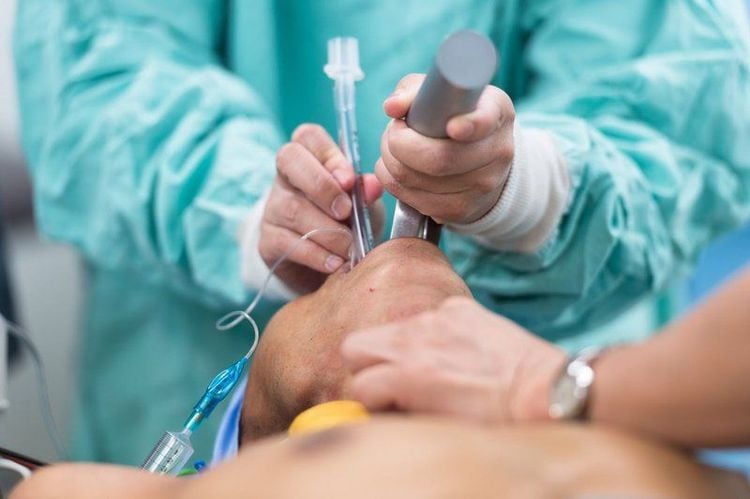
Người bệnh được gây mê nội khí quản trước khi mổ
4. Treatment of laparoscopic accessory nephrectomy
Bleeding: Depending on the extent of the injury, it is possible to stop bleeding or switch to open surgery. Injury to large blood vessels such as the vena cava, renal vein, renal artery, and adrenal vein bleed heavily, which is difficult to control, often requiring conversion to open surgery. Injuries to nearby organs during surgery such as liver, spleen, adrenal gland, intestine. Depending on the injury, the doctor will have appropriate treatment in time. Injury to the lower kidney's ureter due to lack of blood supply, tear of the ureter, retroperitoneal fluid collection: Drainage when the fluid accumulates a lot, there are symptoms of wound infection. Surgery : Wound care Vinmec International General Hospital with modern facilities and medical equipment system and a team of experts, doctors with many years of experience in medical examination and treatment, patients completely You can rest assured that you will be examined and treated at the Hospital.To register for examination and treatment at Vinmec International General Hospital, please book an appointment on the website for service.
Please dial HOTLINE for more information or register for an appointment HERE. Download MyVinmec app to make appointments faster and to manage your bookings easily.
SEE MORELaparoscopy Robot complete nephrectomy Laparoscopic nephrectomy for malignant kidney disease How is laparoscopic nephrectomy performed?






